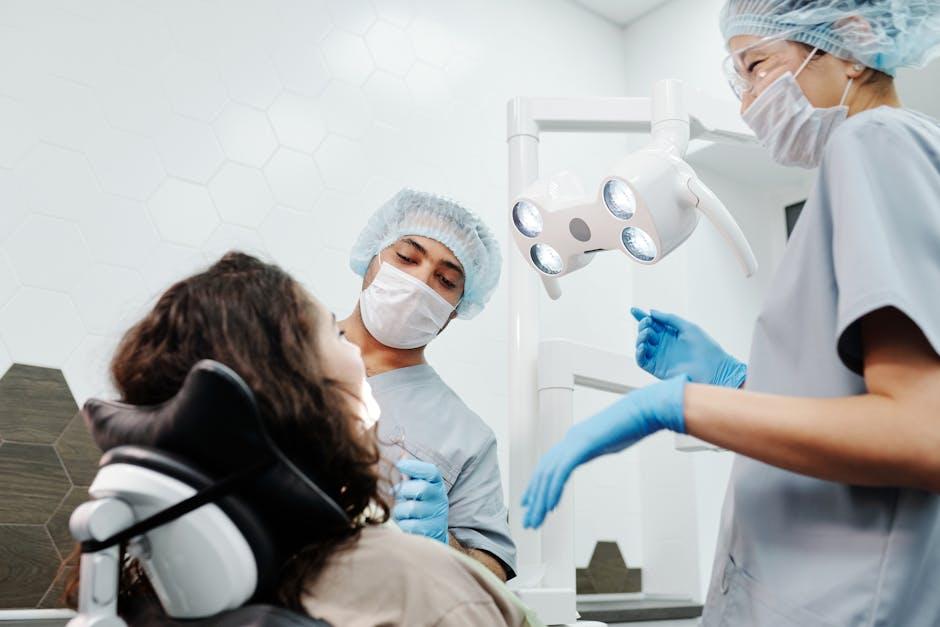
4 Ways You Can ‘Catch’ a Cavity — The Dental Issue Is Actually Contagious
Most people think of cavities as a personal dental issue, something caused by your own oral hygiene habits or sugary diet. But did you know that cavities can actually be contagious? That’s right—dental decay isn’t just about how often you brush your teeth; it can be “caught” from close contact with others. In this comprehensive article inspired by insights from the New York Post, we uncover four surprising ways you can catch a cavity, backed by research and dental experts.
Understanding Cavities and How They Develop
A cavity is a permanently damaged area in the hard surface of your teeth that develops into tiny holes or decay. The main culprit behind cavities is bacteria—in particular, Streptococcus mutans, a type of bacteria that feeds on sugars and produces acid, which eats away at tooth enamel.
While most think cavities arise from personal diet or poor brushing, the transmission of these harmful bacteria can actually happen through everyday interactions. This means the dental issue might be more “infectious” than previously assumed.
4 Ways You Can ‘Catch’ a Cavity
1. Sharing Utensils and Dishware
Using the same forks, spoons, or cups as someone with untreated cavities can transfer cavity-causing bacteria from their saliva to your mouth. This is especially true for young children, whose teeth are more vulnerable to decay.
2. Kissing — Yes, Even Adults Are Susceptible
While kissing is a natural expression of affection, it can also be a mode of transmission for Streptococcus mutans. Saliva exchange during intimate kissing allows bacteria to travel from an infected mouth to a healthy one. The risk is higher if one partner has active cavities or poor oral hygiene.
3. Sharing Oral Hygiene Tools
It might sound obvious, but sharing toothbrushes or floss can easily spread bacteria that cause cavities. Even sharing mouthguards or retainers without proper cleaning can transfer decay-causing microbes.
4. Parental Transmission to Children
Parents often unknowingly transmit cavity-causing bacteria to their children through common behaviors such as cleaning a baby’s pacifier with their mouth or pre-chewing food. These acts introduce harmful bacteria directly into the child’s developing oral environment.
How Contagious is a Cavity? — Table Overview
| Transmission Method | Risk Level | Most Affected Group | Prevention Tip |
|---|---|---|---|
| Sharing Utensils | Moderate | Children & Families | Use separate dishware |
| Kissing | High (with active decay) | Adults & Partners | Improve oral hygiene & dental visits |
| Sharing Toothbrushes/Mouthguards | High | All Ages | Never share oral hygiene tools |
| Parental Transmission | High | Infants & Toddlers | Practice good hygiene & avoid saliva exchange |
Practical Tips to Prevent Catching a Cavity
Now that you know cavities can be contagious, here are expert-approved ways to protect yourself and your loved ones:
- Keep personal items personal: Avoid sharing toothbrushes, floss, or mouthguards.
- Clean utensils thoroughly: Especially in households with young children or individuals with cavities.
- Maintain strict oral hygiene: Brush twice daily with fluoride toothpaste and floss regularly to minimize bacteria growth.
- Limit saliva-sharing behaviors: Be cautious when kissing or interacting closely, particularly if one person has untreated cavities.
- Regular dental visits: Early detection and treatment can reduce the bacterial load and lower transmission risk.
Case Study: How Cavity Bacteria Spread in Families
A 2018 study published in the Journal of Clinical Microbiology tracked oral bacteria transmission in 50 families. Researchers found that 60% of young children carried the exact same strain of cavity-causing bacteria as their parents. The findings highlighted that behaviors such as sharing spoons and biting pacifiers significantly increased bacterial transfer, elevating cavity risk in children.
What This Means for You
This study underscores the importance of good hygiene practices within families and social circles. While it doesn’t mean you should avoid affection or fun with food, being mindful about bacterial transmission can drastically reduce cavity risk.
First-Hand Experience: A Mother’s Perspective
Jessica, a mom of two from Brooklyn, shares, “I used to clean my toddler’s pacifier with my mouth without thinking twice. After my dentist told me cavities can be contagious, I stopped that habit immediately. We also stopped sharing utensils at meals. Since then, my kids have had fewer dental issues, and our whole family focuses more on oral care.”
Why Understanding Contagious Cavities Matters
Recognizing that cavities are not just about personal habits but also about bacterial transmission helps shift how we think about dental health. A cavity isn’t just your problem — it can be a problem shared through close interactions. By addressing this, communities and families can take better preventive measures to reduce overall dental decay.
Conclusion: Stay Cavity-Safe by Being Informed and Proactive
Cavities are more than just isolated dental nuisances — they are somewhat contagious due to the transmission of bacteria between people. By understanding the four main ways cavities can spread, from sharing utensils to kissing and parental contact, you empower yourself to make smarter, healthier decisions for your oral care routine.
Implementing simple preventative strategies like avoiding sharing oral items, practicing excellent oral hygiene, and getting regular dental checkups can significantly reduce your risk of “catching” a cavity. The next time you think about dental health, remember it’s not only about your own habits — it’s also about protecting yourself from contagious bacteria in everyday encounters.
For more expert dental advice and health news, stay tuned to the New York Post and trusted dental sources.


